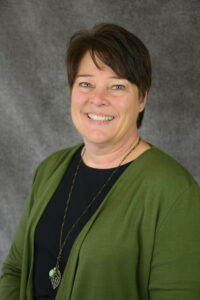by Sara Croymans, MEd, AFC
On April 2, 2019 OneOp Personal Finance and Family Transitions concentration areas co-sponsored the webinar PCS Series: Research and Tools for Supporting Military Transitions.
This was the third and final webinar in the 3-part Permanent Change of Station series which focused on the issues military families face during a PCS. This blog post highlights some of the discussion, questions, resources and engagement that occurred during the webinar.
Presenter Vickie LaFollette, Department of Defense Analyst, provided an overview of two RAND Reports:
- Enhancing Family Stability During a Permanent Change of Station: A Review of Disruptions and Policies
- The Effects of Military Change of Station Moves on Spousal Earnings as well as the 2017 Survey of Active Duty Spouses.
Ms. LaFollette shared that the average number of PCSs during a service members career is 2.9 moves. The number, on average, increases with the age of the spouse, for example, spouses less than 26 years old average 1.4 moves while spouses over the age of 40 average 4.9 moves.
The second webinar presenter, Zona Lewis, Strategic Outreach Online Content & Resources Manager, highlighted four key resources available to military service providers as they assist Service members and families experiencing PCS moves:
- Military OneSource’s Spouse Relocation and Transition Specialty Consultations – (800) 342-9647
- Military OneSource Website
- MilitaryINSTALLATIONS
- Plan My Move
The webinar participants indicated they work with military families on PCS issues at various times throughout the transition. Some service providers indicated they have the luxury to work with families early in the PCS process which allowed for planning and budgeting, while other service providers indicated they are approached for assistance later in the process when families are encountering problems that need to be resolved.
The individuals participating in the webinar had a great conversation about what they see as the ‘biggest” issues facing military families during a PCS. The top issues identified included spousal employment (job loss, loss of income, delay in finding a new job, not earning enough to cover child care), financial issues (basic budgeting, saving for moving expenses, struggling with debt, planning for loss of spouse income, claiming PCS expenses on taxes, long term impacts on retirement savings and Social Security benefits), and families not having the right information or reliable information (not being aware of entitlements available and too much second hand information that isn’t always accurate).
One participant asked if there were statistics about spouse underemployment, as many spouses are only able to secure entry level positions after a move. A RAND study from 2010, “Measuring Underemployment Among Military Spouses” provides some insight. A 2017 report from the U.S. Chamber of Commerce Foundation, “Military Spouses in the Workplace: Understanding the Impacts of Spouse Unemployment of Military Recruitment, Retention, and Readiness” address the unemployment/underemployment issue.
Another participant asked how the new changes to the PPP [Priority Placement Program] for spouses may affect unemployment rates. A Military OneSource article, “Military Spouse Preference for Department of Defense Employment”, shares that the PPP has improved the process for military spouses to use military spouse hiring preferences. Given the PPP changes are fairly new it will be interesting to see if there is a resulting decrease in spousal unemployment rates.
Webinar participants engaged in quite a bit of discussion about the implications of a PCS on taxes. Service members are encouraged to access Personal Financial Managers as well as the tax resources on Military OneSource for assistance. One participant shared that the IRS Publication 521 – Moving Expenses is a valuable tool. Another participant shared about the Military Spouse Residency Relief Act (MSRRA) which addresses how military spouses can keep a state of residency when they PCS. Check out Military One Source’s informational sheet on the Military Spouses Residency Relief Act (MSRRA) (Public Law 111‐97). Zona Lewis also shared a blog post about taxes and residency on Military One Source’s Blog Brigade written by a military spouse, “Wait, What State Do We Live in? Help for Your State Taxes!”
Participants shared they had several ‘go-to’ resources when assisting PCSing families, including: Installation Relocation Program (including lending lockers), Fleet & Family Support Center, Military & Family Readiness Center, Military One Source (including Plan My Move), Family Member Employment Assistance Program (FMEAP), Distribution Management Office (DMO) for household goods, finance disbursing office, Installation Personnel Administration Center, Personal Financial Management (PFM) Specialists, and the Defense Travel calculators to see what BAH, COLA (if applicable) will be at their new duty station.
When asked if they could create one online tool to assist PCSing families, the webinar participants had several great ideas:
- Calculators:
- to help families determine if it is feasible for a young spouses to stay home to care for young children rather than working outside the home
- to give families an ACCURATE estimate of costs at the new location (actual rent, utilities, groceries, etc.)
- a site to show financial calculations about the expenses before, during and after a PCS move.
Note these available resources:
-
-
- The Military OneSource Plan My Move resource has calculators and resources to research the cost of living at a new installation
- Stay at Home calculator from Parents.com
-
- A tool to link military families to a relocation specialist on the other end to assist in their transition and their needs on the other end
- Employment Assistance before leaving the Installation
- Something that would combine all the dependent concerns – what’s housing look like? what are the school zones? What about graduation requirements
- Something to provide imagery, contact information, local policies re: housing, TLF, pets, etc.
- Even just a phone number to call to see the available options at the installation or area they are moving to
- Command orders linking to relocation
- An online checklist for all household changes
- Whole-family education about proper use of the Government Travel Card
- Information on remote assignments as it’s not just Guard & Reserve members that end up nowhere near an installation…
Helping military families successfully navigate a PCS requires a lot of coordination. One webinar participant reminded everyone that many military Community Service programs work together to help Service members and families with a PCS, including Financial, Employment, and Relocation, as well as the Exceptional Family Member Program (EFMP), among others. It does take a village to navigate a PCS.
The recording of this webinar, PCS Series: Research and Tools for Supporting Military Transitions, along with the presentation slides and a listing of additional resources are available on the webinar event page.
Writers Biography
 Sara Croymans, MEd, AFC, University of Minnesota Extension Educator, member of the OneOp Family Transitions team, military spouse, and mother.
Sara Croymans, MEd, AFC, University of Minnesota Extension Educator, member of the OneOp Family Transitions team, military spouse, and mother.















